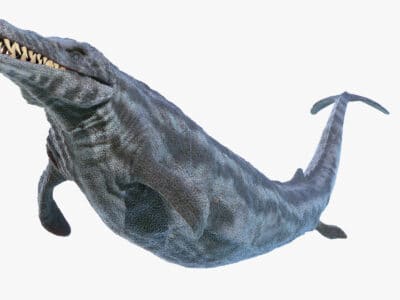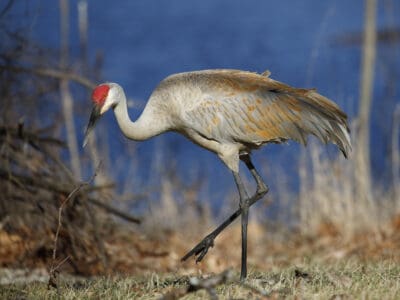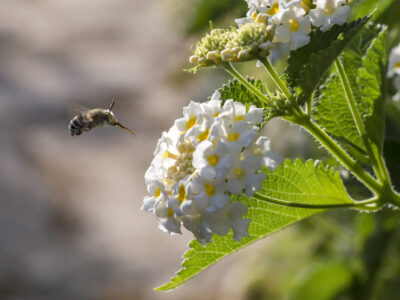The state of Mississippi is made up of many different landscapes including forests, wetlands, barrier islands, prairies, and coastal dunes. With so many diverse environments, it’s not surprising to learn that Mississippi is home to many different types of wildlife. This southern state is home to over 84 species of reptiles and 426 plus species of birds. In addition, more than 120 species of fish live in the Mississippi River.
A few of the most well-known wild animals living in Mississippi include American alligators, Mississippi kites, armadillos, bottlenose dolphins, southern flying squirrels, muskrats, and kingsnakes. A lot of spider species and ticks can also be found in Mississippi.
The Official Animal of Mississippi
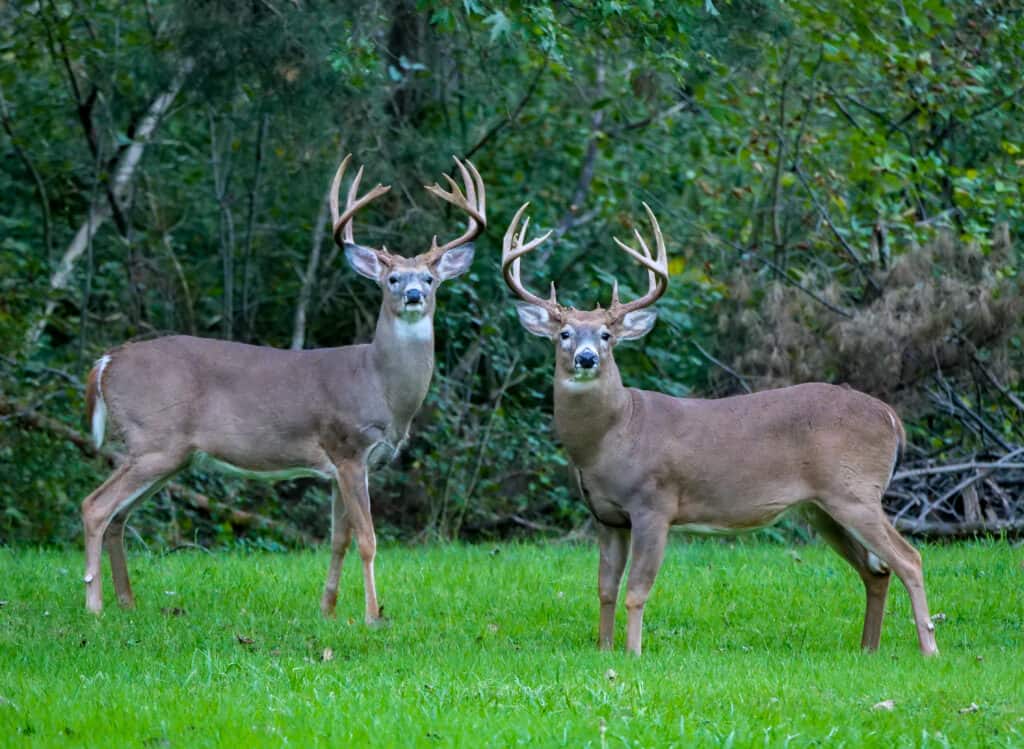
In 1974, Senate Bill No. 2324, General Laws of Mississippi, designated the State Land Mammal of Mississippi as the White-Tailed Deer
©iStock.com/Ralph Navarro
In 1974, Senate Bill No. 2324, General Laws of Mississippi, designated the State Land Mammal of Mississippi as the White-Tailed Deer (Odocoileus virginianus). Additionally, Mississippi with its diverse collection of wildlife has a few animals that officially represent the state.
Let’s dig a little deeper:
Official state bird of Mississippi: Northern Mockingbird
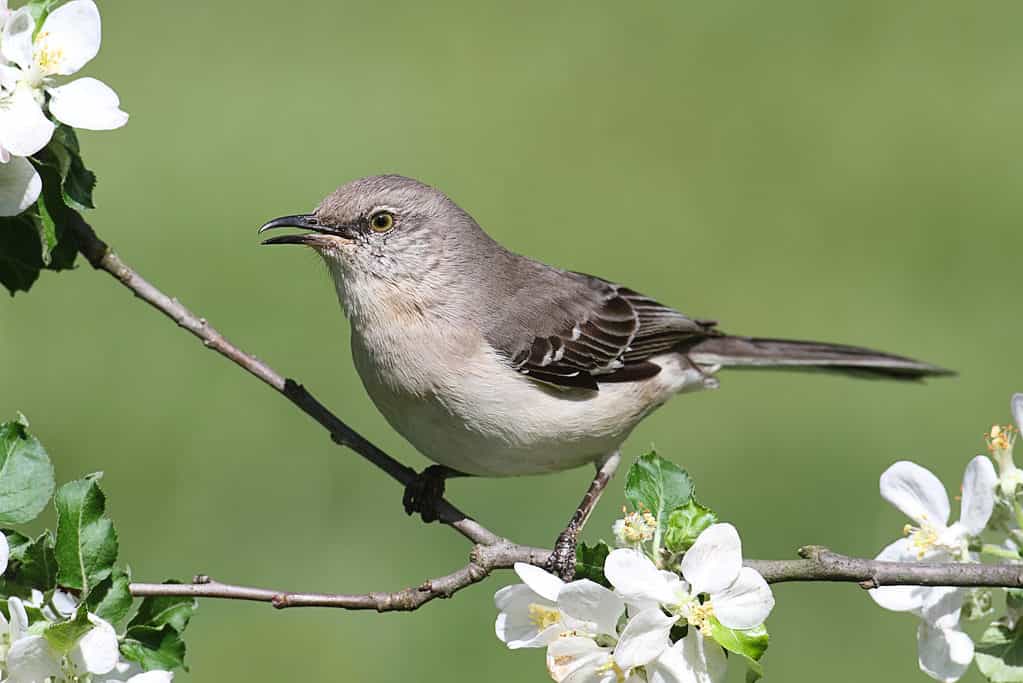
The northern mockingbird (
Mimus polyglottos) became the official state bird of Mississippi in 1944.
©Steve Byland/Shutterstock.com
The northern mockingbird (Mimus polyglottos) became the official state bird of Mississippi in 1944. This bird is known for its ability to mimic the sounds of other animals, especially other birds. It can also mimic unique and strange sounds in the environment such as a squeaky porch door, a truck engine, or a cellphone’s ringtone. This bird with its gray and white feathers is a familiar sight (and sound) all around Mississippi.
Official State Land Mammal: White-Tailed Deer

In 1974, the white-tailed deer (
Odocoileus virginianus) became the official land mammal of Mississippi.
©Andrew M. Allport/Shutterstock.com
In 1974, the white-tailed deer (Odocoileus virginianus) became the official land mammal of Mississippi. People who hunt for white-tailed deer add over a hundred million dollars to the economy of this state each year. These deer are plentiful in Mississippi. With a population of 1.75 million deer, these mammals are certainly a common sight in the state.
Rarest Animals found in Mississippi
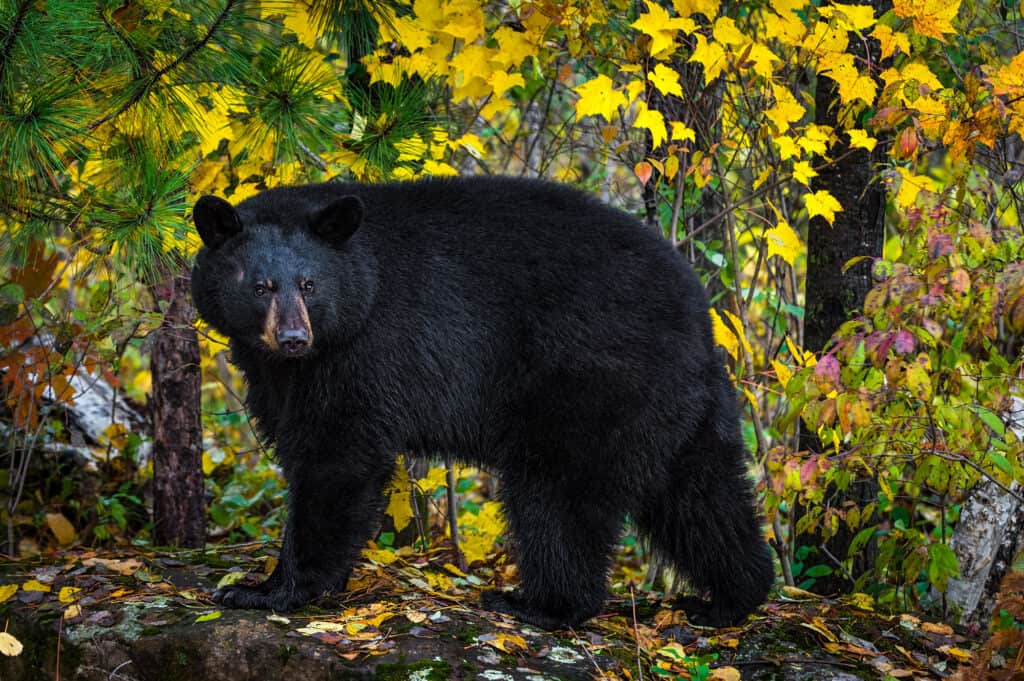
Black bears are omnivorous, meaning they can feed on a wide range of plant and animal matter.
©Holly Kuchera/Shutterstock.com
Mississippi is home to a diverse range of animal species, from the majestic white-tailed deer to the elusive black bear. However, the state also houses some of the rarest and most endangered animals in the country.
Here is a short list of the rarest animals found in Mississippi:
- Alabama Moccasinshell
- Alabama Shad
- Alabama Sturgeon
- American Chaffseed
- Angular Dwarf Crayfish
- Bearded Red Crayfish
- Black Clubshell
- Black Rail
Largest Animals found in Mississippi
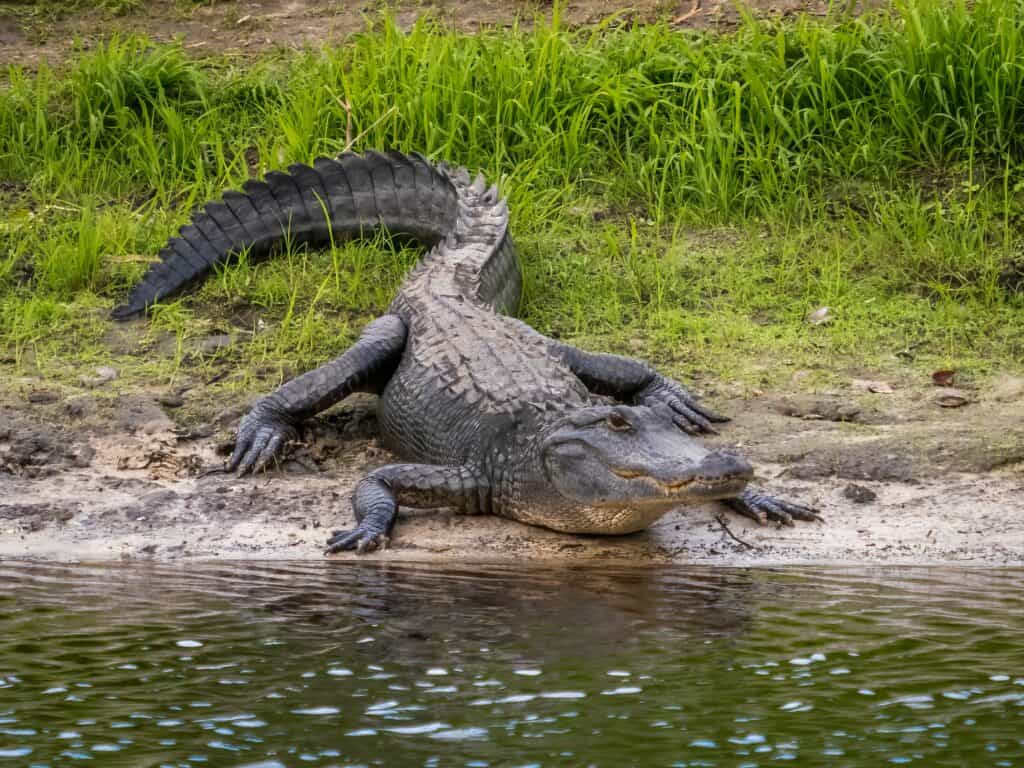
Alligators can sometimes be found in river deltas.
©Jim Schwabel/Shutterstock.com
Mississippi is a state filled with wildlife, and it’s no surprise that some of the largest animals in North America can be found here. From massive mammals to giant reptiles, Mississippi’s wildlife is truly impressive in its size and stature.
Here are some of the largest animals found in Mississippi:
- American Alligator
- Eastern Diamondback Rattlesnake
- Catfish
- Broad-Headed Skink
- Turkey Vulture
- American Black Bear
- Eastern Indigo Snake
- Black Drum
- Bald Eagle
- Bottlenose Dolphin
- Longnose Gar
Official State Water Mammal: Bottlenose Dolphin

Dolphins attach a sponge to their noses and use it to protect their flesh while foraging for food.
©iStock.com/Lefteris_
The bottlenose dolphin (Tursiops truncates) became the official state water mammal in 1974. These mammals have a grayish-blue upper body and a white belly. They can grow to be 12 feet in length and are commonly seen off the Gulf Coast of Mississippi. These playful creatures are social and very curious about humans.
Official Fish of Mississippi: Largemouth Bass
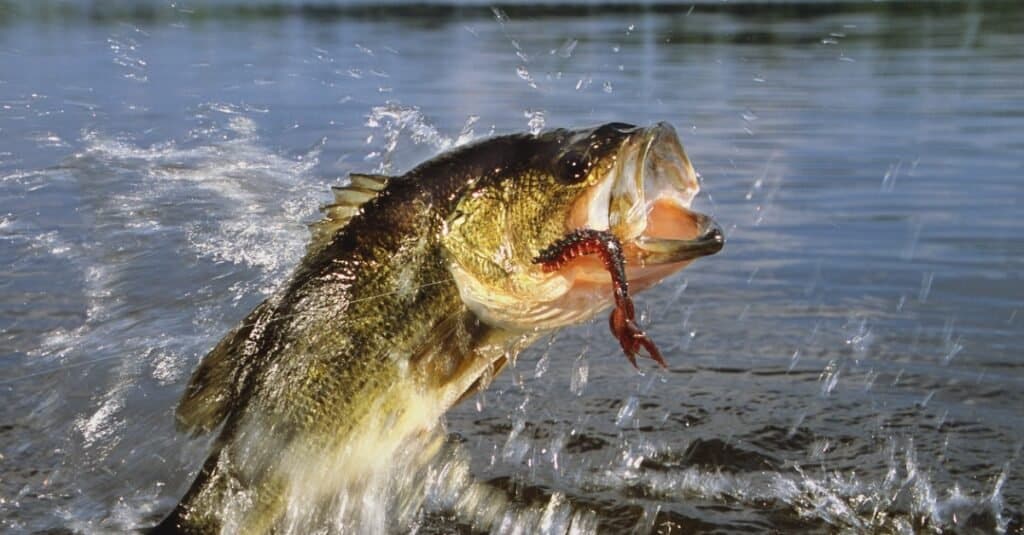
Bass hunt by opening their large mouths and sucking the prey in.
©iStock.com/stammphoto
The largemouth bass (Micropterus salmoides) was made the official fish of the state of Mississippi in 1974. This Mississippi native has green scales on the upper part of its body paired with white scales on its belly. It is sometimes called the Black bass because some of them have scales that are dark green or even black. They are a common sight in the Mississippi River.
Where to Find the Top Wild Animals in Mississippi

©critterbiz/Shutterstock.com
Touring the various landscapes in Mississippi gives visitors the opportunity to see different types of wild animals.
The wetlands of Mississippi are home to many unique wild animals. Some of the reptiles include the Mississippi green water snake, the Mississippi mud turtle, the American alligator, and the eastern mud turtle. Birds such as the wood stork and reddish egret as well as the swallow-tailed kite with its strange split or forked tail also reside in the wetlands of Mississippi. Rodents such as the marsh rice rat and nutria live in the wetlands as well. Red foxes, wild hogs, and swamp rabbits are also found in this habitat. Don’t forget the blue dasher or eastern Amberwing dragonflies!
In the forests of Mississippi, visitors are likely to find mammals such as the southern flying squirrel, white-tailed deer, raccoons, beavers, and skunks. The northern mockingbird, the red-bellied woodpecker, the chipping sparrow, the indigo bunting, and the white-breasted nuthatch are just a few of the birds that make their home in the forests of this state. When it comes to bats in Mississippi’s forests, visitors may observe the big brown bat, the Brazilian free-tailed bat, the gray bat, and the Seminole bat to name a few.
Though prairies make up a small percentage of the landscape of Mississippi, they are still home to a variety of animals. Some of those include wild turkeys, white-tailed deer, rabbits, and prairie warblers.
Recommended places to see wildlife:
- Mississippi Sandhill Crane Refuge
- Panther Swamp Wildlife Refuge
- Great River Road State Park
- Greenville Cypress Preserve
- Clark Creek State Park
- Gulf Islands National Seashore
- Holly Springs National Forest
Locations of Zoos in Mississippi
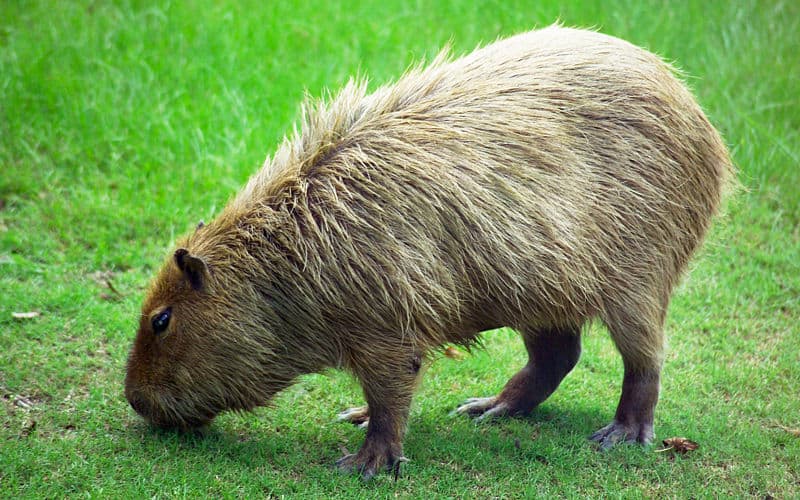
Capybara at Hattiesburg Zoo
The zoos in Mississippi are excellent places to visit in order to learn about native wildlife and animals from elsewhere in the world. Some of them include:
The Most Dangerous Animals in Mississippi Today

Cottonmouth snake displaying its white mouth as a warning.
©Jay Ondreicka/Shutterstock.com
Out of the many animals native to Mississippi, there are some that are considered dangerous. Of course, it’s always a good idea to respect all animals as well as their habitat. Some of the most dangerous animals in Mississippi include:
The cottonmouth snake is one of the most dangerous reptiles in Mississippi. These snakes are venomous and can be two to four feet in length. It’s called a cottonmouth because the inside of its mouth is a pure, glaring white. These reptiles open their mouths to reveal the bright white in an effort to scare threats away. This snake’s venom is potent and can indeed be deadly to a human. Though these particular reptiles are responsible for less than one percent of all snakebite deaths in the United States, medical attention is needed for any cottonmouth snakebite.
The timber rattlesnake is another dangerous animal in Mississippi. This snake is known to expel a lot of venom in its bite. Another aspect that makes them dangerous is their size. These reptiles can grow to a length of five feet! A timber rattlesnake uses the rattle on its tail to warn predators and other threats to stay away. Their venom is powerful enough to kill a human and not just the rodents it eats. However, these snakes are known to be non-aggressive and will give ample warnings before biting a person. In the past ten years, there were fewer than five deaths attributed to timber rattlesnakes in the United States.
The eastern diamondback rattlesnake is the biggest venomous snake in all of North America. They usually grow to a length of five and a half feet. But the record length of an eastern diamondback rattlesnake is eight feet! This snake becomes aggressive when it feels trapped and will bite to protect itself. It releases a large amount of venom in its bite and that venom has the potential to kill a human. But death occurs only in the rarest of circumstances due to the abundance of available antivenin for this snake’s bite. In short, medical attention is needed for an eastern diamondback rattlesnake bite.
Endangered Animals in Mississippi

©Isabelle Kuehn/Shutterstock.com
Endangered animals in Mississippi include:
- Ivory-billed woodpecker – These birds are listed as Critically Endangered, and biologists estimate their population between one and 49 individuals. Unfortunately, this bird is one of the rarest sights in Mississippi and has been written off as Extinct by some biologists.
- Bachman’s warbler – This bird’s habitat is the wetlands. It is bright yellow paired with a cap of black feathers. This warbler has a conservation status of Critically Endangered. It’s very low population (between one and 49 individuals) is due to habitat loss and poaching activity. Their bright feathers were once widely used in decorating hats and other clothing.
- Green turtle – This turtle is named for the greenish tinge of its feet and head. They live on the Gulf Coast. These reptiles can grow to be 47 inches long and weigh 400 pounds! They are Endangered due to poaching activity and loss of habitat. Furthermore, they can become trapped in commercial fishing nets and die as a result. Their population is unknown.
- Kemp’s Ridley – This sea turtle holds the title of being the smallest in the world at 30 inches long and weighing 100 pounds or less. They are categorized as Critically Endangered and one of the rarest sights along the Gulf Coast. They are threatened by habitat loss and are vulnerable to becoming tangled in commercial fishing nets.
- Bayou darter – The habitat of this fish includes the Bayou Pierre and some fast-flowing creeks in Mississippi such as Foster and Turkey Creek. Bayou darters measure just two and a half inches long and have brownish-green scales. This fish is categorized as Endangered with an unknown population. Habitat loss is the main threat to this tiny fish.
Check out more endangered animals living in Mississippi.
Snakes in Mississippi
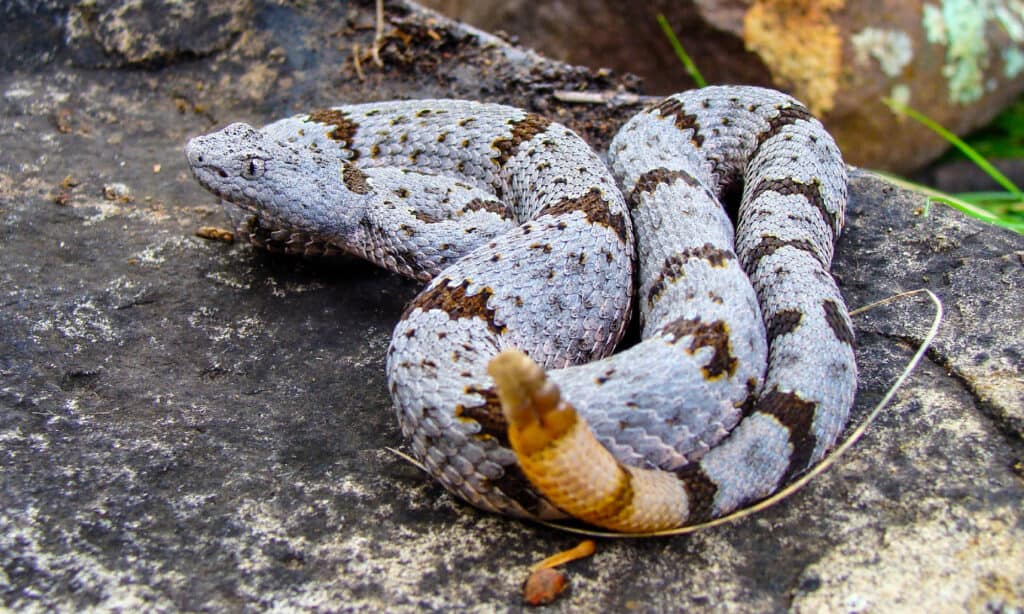
©Matt Jeppson/Shutterstock.com
Mississippi has a wide variety of snakes. Including some subspecies of different snake species, we’ve identified 51 types of snakes that can be found within Mississippi’s borders! The snakes that need to be watched for with the most care are venomous snakes within the state.
The following snakes in Missippi contain venom and could be especially harmful:
- Southern Coppherhead
- Cottonmouth Snakes (Northern and Western)
- Coral Snakes
- Pygmy Rattlesnakes (Western and Dusky)
- Timber Rattlesnake
- Eastern Diamondback
Native Plants in Mississippi
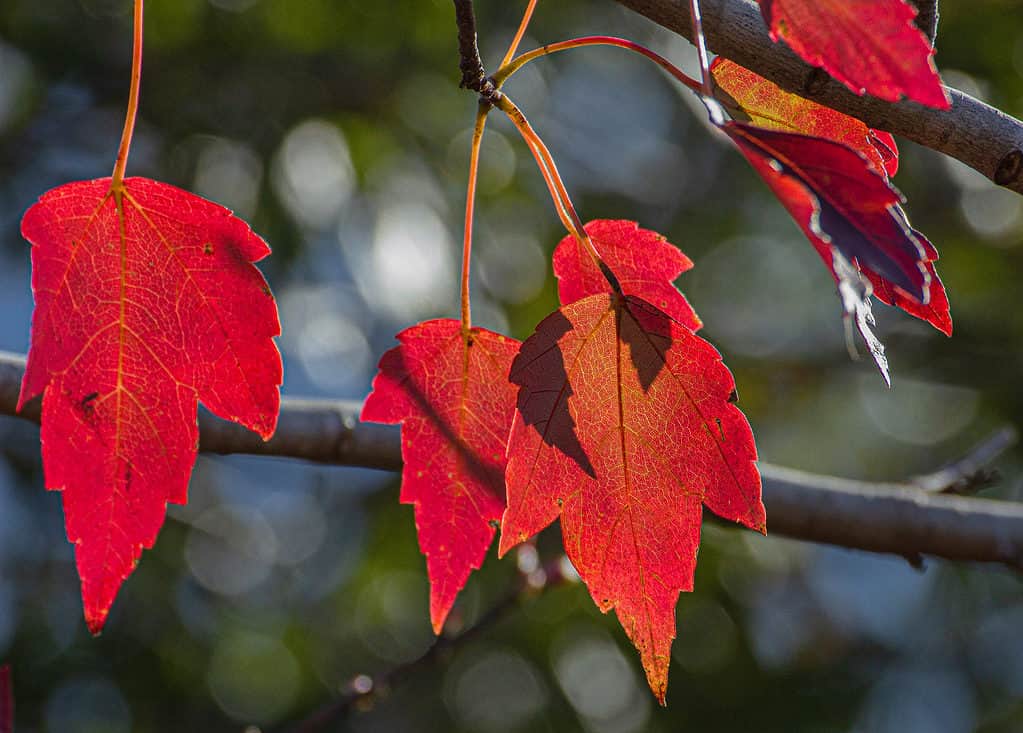
The red Maple is known for its stunning fall colors, which can range from muted yellows to oranges.
©Ken Donaldson/Shutterstock.com
The state of Mississippi is one of the largest producers of farm-raised catfish, pulpwood, cotton, and sweet potatoes. Some native plants in Mississippi include eastern Bluestar, cigar tree, and crossvine, among others.
Here is a short list of plants found in Mississippi:
- Red maple
- Boxelder maple
- Red Columbine
- American beautyberry
- Butterfly weed
- Flowering dogwood
- Whitemouth dayflower
- Crossvine
Flag of Mississippi
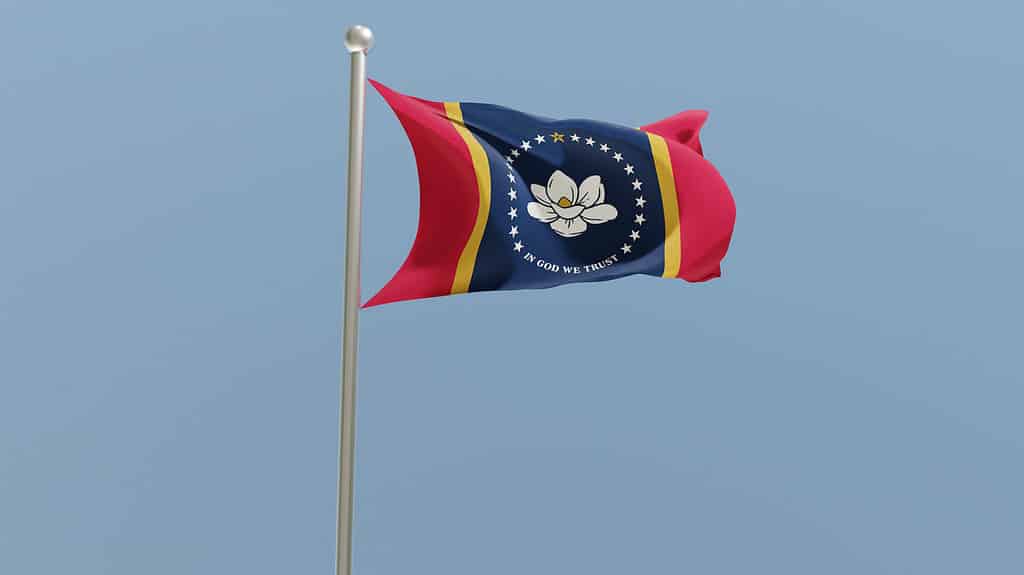
Mississippi flag on a flagpole. MS flag fluttering in the wind. The USA. 3D render.
©iStock.com/Andrey Semenov
The flag of Mississippi consists of a white magnolia blossom surrounded by 21 white stars and the words “In God We Trust” written below, all centered on a blue Canadian pale with two gold borders on a red background.
On January 11, 2021, the flag was officially adopted, featuring a design that includes a white magnolia flower encircled by 21 white stars. The flag’s design is set against a red background with a blue Canadian pale and two gold borders.
The topmost star is made up of a pattern of five diamonds, while the remaining 20 stars are white.
Mississippian Animals

Admiral Butterfly
Stunningly beautiful wings
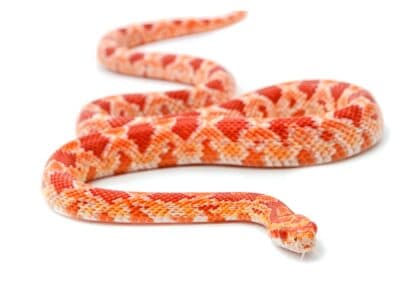
Albino (Amelanistic) Corn Snake
Albino corn snakes make great beginner snakes.
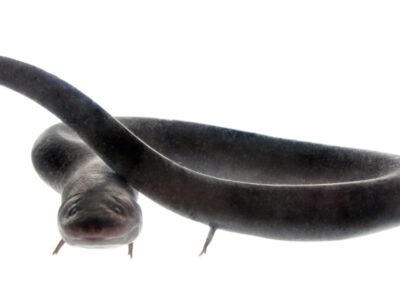
American Eel
Don't eat raw eel! Their blood is poisonous to humans when consumed raw.

Armyworm
They are so named because they "march" in armies of worms from one crop to another in search of food
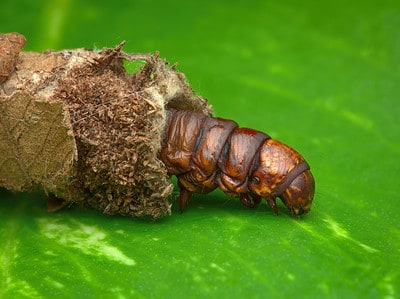
Bagworm Moth Caterpillar
They continually enlarge their protective cases

Banded Water Snake
Some water snakes defend themselves violently.

Beewolf wasp
They hunt bees

Blue Catfish
It's a strong fighter when caught on a fishing line
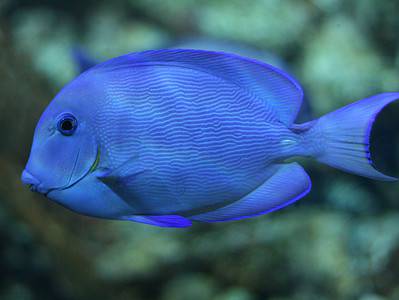
Blue Tang
One of the most colorful members of the genus Acanthurus
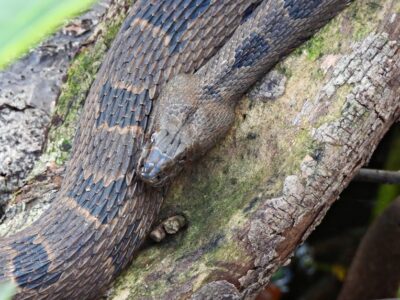
Brown Water Snake
Has more scales than any other water snake on the continent: 27 to 33 rows of dorsal scales!

Clearnose Skate
The skate with translucent nose patches

Common Yellowthroat
The Common Yellowthroat stays close to the ground and uses stealth to survive!
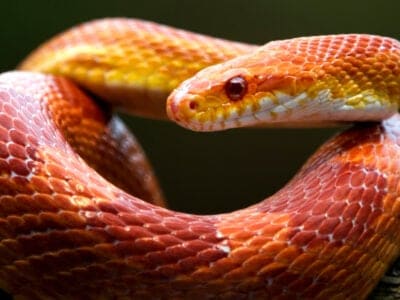
Corn Snake
Corn snakes are partly arboreal and are excellent climbers.

Crocodylomorph
Crocodylomorphs include extinct ancient species as well as 26 living species today.
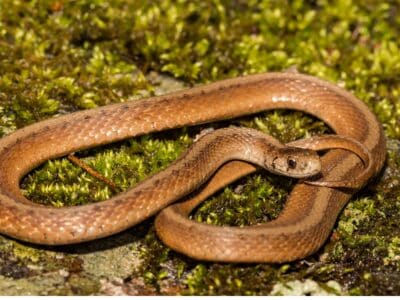
De Kay’s Brown Snake
They have specialized jaws for removing snails from shells.

Eastern Diamondback Rattlesnake
This is the biggest venomous snake in North America, with a few that reach 8 feet long.
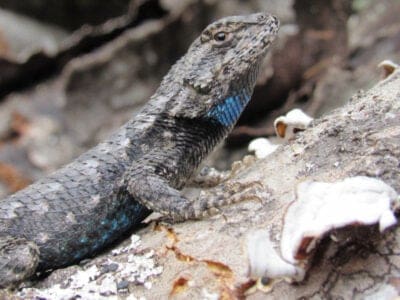
Eastern Fence Lizard
Females are usually larger than males.
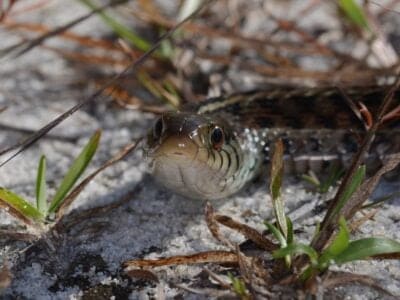
Eastern Glass Lizard
When the glass lizard loses its tail it can grow another one. But the new tail lacks the markings of the old one and is usually shorter.

Eastern Hognose Snake
Eastern hognose snakes are venomous, but only to frogs and toads.
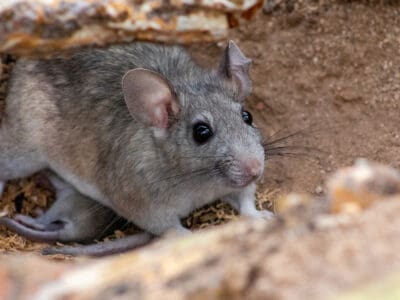
Eastern Woodrat
The eastern woodrat mating ritual involves a potentially deadly fight between the male and female before reproduction begins!

Flea
Adult fleas can jump up to 7 inches in the air
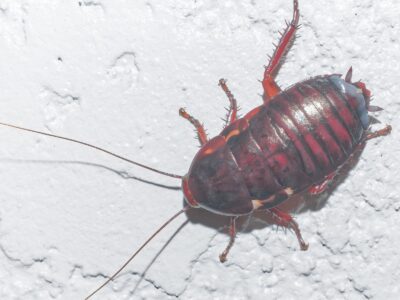
Florida Woods Cockroach
Often found on palmetto trees
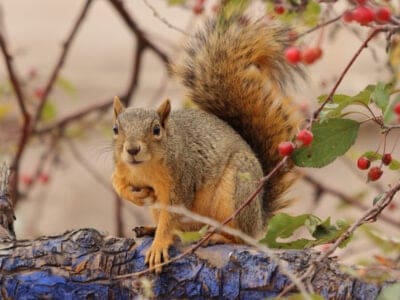
Fox Squirrel
Although it is a tree squirrel, it spends most of its time on the ground.

Groundhog (Woodchuck)
They whistle to each other to warn of approaching danger!

Indigo Snake
Indigo snakes use brute force to overpower their prey.

Jack Crevalle
One of the biggest species in the Caranx genus

Jackrabbit
They can run as fast as 45 mph.
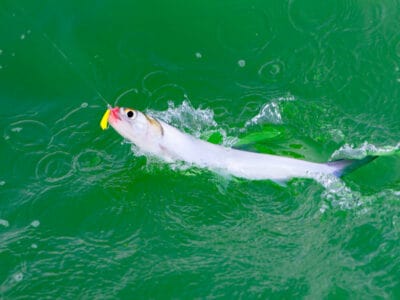
Ladyfish
Ladyfish are aggressive fighter when hooked, making them a favorite of anglers.

Mealybug
They have a symbiotic relationship with ants.

Mockingbird
Mockingbirds are incredible mimics that can learn hundreds of songs!
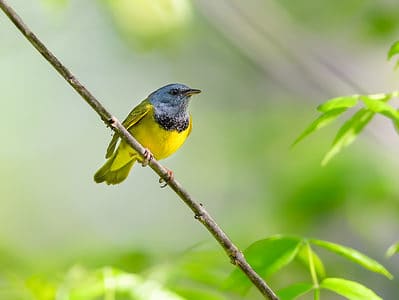
Mourning Warbler
The Mourning Warbler was named for its gray head, which resembles a mourning veil!
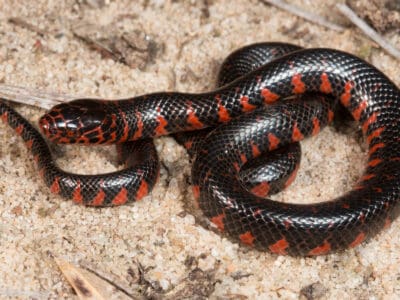
Mud Snake
Mud snakes can lay over 100 eggs at a single time!

Nematode
Nematodes range in size from 1/10 of an inch to 28 feet long

Orb Weaver
Females are about four times the size of males

Owl
The owl can rotate its head some 270 degrees
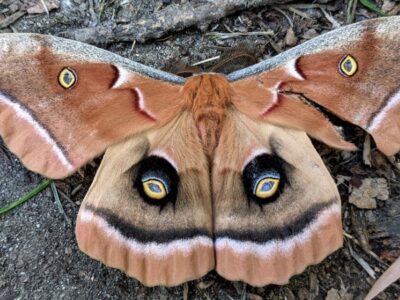
Polyphemus Moth
The Polyphemus moth doesn’t and can't eat, except when it's a caterpillar!

Pompano Fish
They are bottom-feeders

Pygmy Rattlesnake
Pygmy rattlesnakes’ rattle is so small it can only be heard from about three feet away.
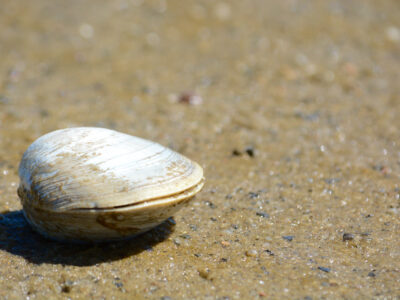
Quahog Clam
Their hinged shell protects their soft body

Rat Snakes
Rat snakes are constrictors from the Colubridae family of snakes.

Red-Bellied Woodpecker
Red-Bellied Woodpeckers will often steal the nests of other birds.
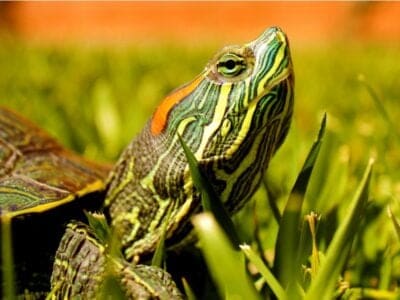
Red-Eared Slider
Sliders spend lots of time basking in the sun. As cold-blooded animals, they need the sun to heat up.
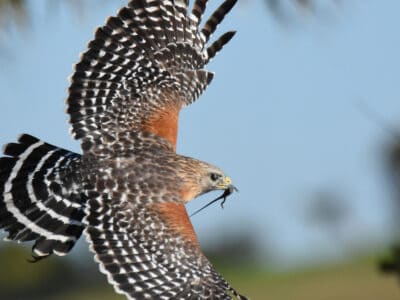
Red-Shouldered Hawk
Red-Shouldered Hawks reuse the same nesting area each year.

Rooster
Will mate with the entire flock!

Rough Earth Snake
It has a pointed snout that is uses to burrow into moist soil.
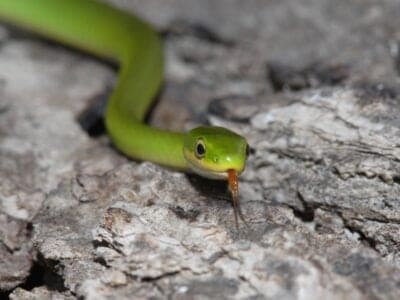
Rough Green Snake
Rough green snakes are great pet snakes because they're low-maintenance.
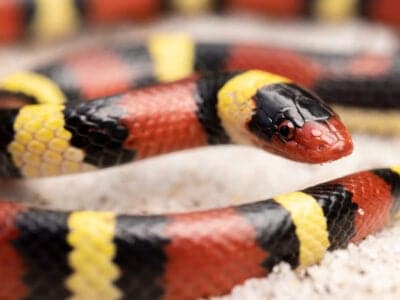
Scarlet Kingsnake
Scarlet kingsnake’s pattern is an example of Batesian mimicry.
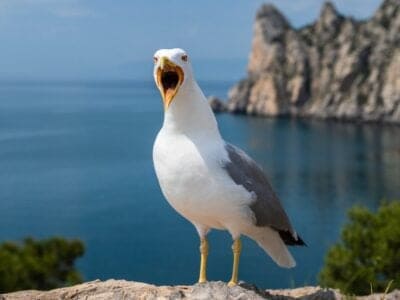
Seagull
Some gulls are capable of using tools

Smokybrown Cockroach
Has up to 45 eggs per egg case
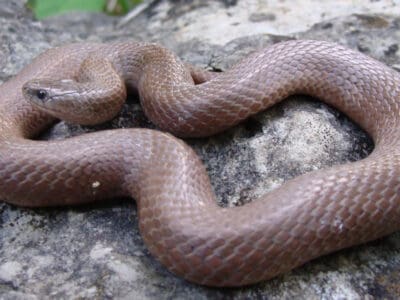
Smooth Earth Snake
Valeria Biddle Blaney (1828-1900) collected the first specimen in Maryland.

Tree Cricket
They make music with their wings
Mississippian Animals List
- Admiral Butterfly
- Agkistrodon Contortrix
- Albino (Amelanistic) Corn Snake
- American Eel
- Armyworm
- Bagworm Moth Caterpillar
- Banded Water Snake
- Basilosaurus
- Beewolf wasp
- Blue Catfish
- Blue Tang
- Brown Water Snake
- Clearnose Skate
- Common Yellowthroat
- Corn Snake
- Crocodylomorph
- De Kay’s Brown Snake
- Eastern Diamondback Rattlesnake
- Eastern Fence Lizard
- Eastern Glass Lizard
- Eastern Hognose Snake
- Eastern Woodrat
- Flea
- Florida Woods Cockroach
- Fox Squirrel
- Groundhog (Woodchuck)
- Indigo Snake
- Jack Crevalle
- Jackrabbit
- Ladyfish
- Mealybug
- Milk Snake
- Mockingbird
- Mourning Warbler
- Mud Snake
- Nematode
- Orb Weaver
- Owl
- Pine Snake
- Polyphemus Moth
- Pompano Fish
- Pygmy Rattlesnake
- Quahog Clam
- Rat Snakes
- Red-Bellied Woodpecker
- Red-Eared Slider
- Red-Shouldered Hawk
- Rooster
- Rough Earth Snake
- Rough Green Snake
- Sandhill Crane
- Scarlet Kingsnake
- Seagull
- Smokybrown Cockroach
- Smooth Earth Snake
- Southeastern Blueberry Bee
- Swallowtail Butterfly
- Tree Cricket
Animals in Mississippi FAQs (Frequently Asked Questions)
What kind of animals live in Mississippi?
All kinds of animals live in Mississippi including mammals, birds, reptiles, amphibians, and insects. Some examples include the common white-tailed deer, American alligators, southern flying squirrels, coyotes, bison, Brazilian free-tailed bats, and northern mockingbirds. Don’t forget the many rodents that are native to the state including the southeastern shrew, the marsh rice rat, and the oldfield mouse.
What is the most dangerous animal in Mississippi?
The most dangerous animals in this state are all reptiles. The cottonmouth snake, timber rattlesnake and the eastern diamondback rattlesnake are all venomous reptiles.
What are some predators in Mississippi?
Some notable predators in the Magnolia state include coyotes, bobcats, and black bears. Even the feral hog with its strange, thick coat of bristly hair is one of Mississippi’s predators. Feral hogs eat plants, leaves, fruit, and seeds. However, they also hunt fish, birds, reptiles and sometimes eat deer fawns.
Are there wolves in Mississippi?
Yes. Some red wolves live in zoos and in wolf sanctuaries in Mississippi. There are also a very small number of these wolves that have been introduced back into the wild.
Though these wolves are considered Critically Endangered, there are conservation efforts now being made on behalf of red wolves.
What types of rattlesnakes live in Mississippi?
There are 4 types of rattlesnakes in Mississippi: the western pygmy rattlesnake, dusky pygmy rattlesnake, timber rattlesnake and the eastern diamondback rattlesnake.




